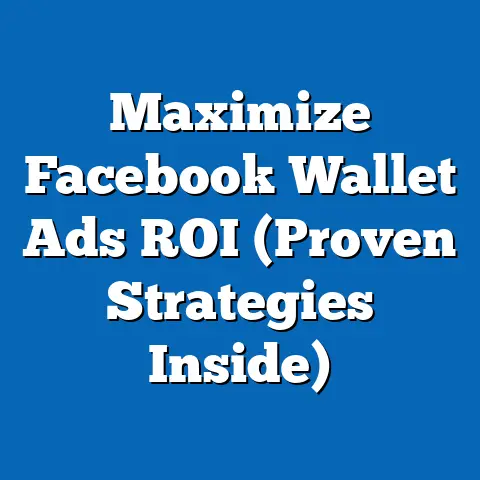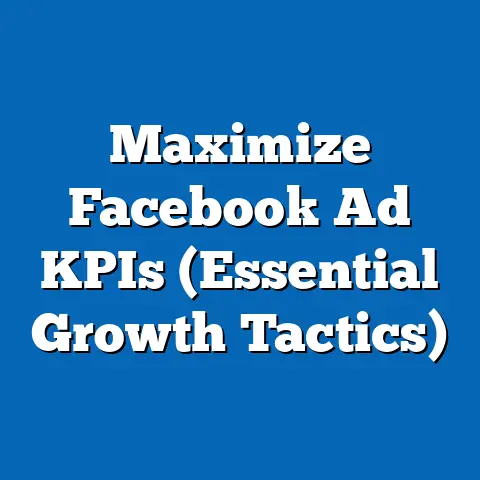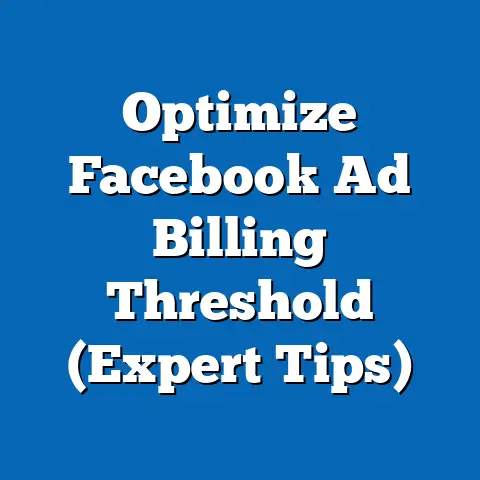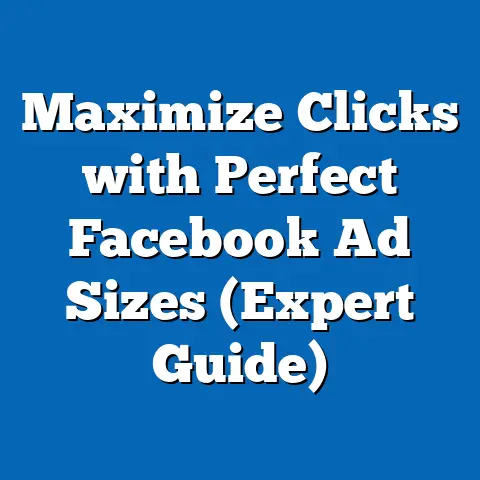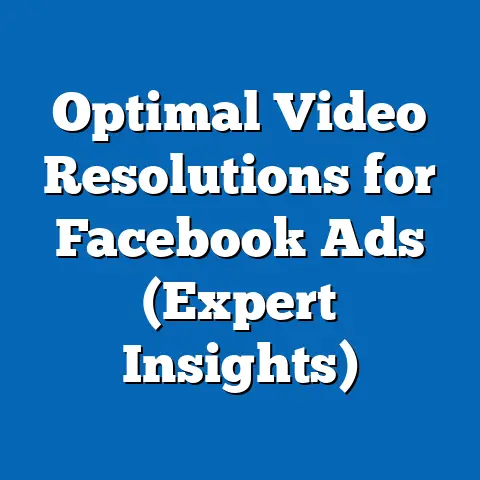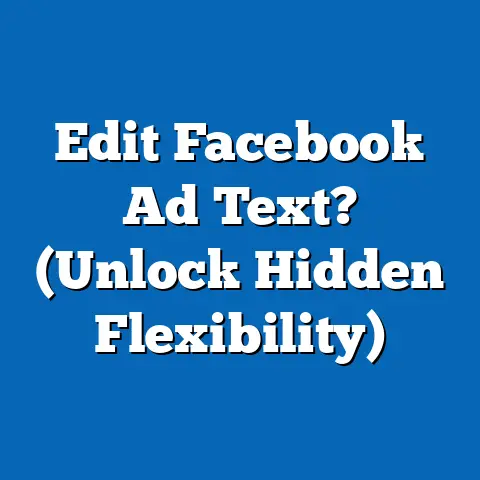Grow Facebook Group with Ads (Strategic Insights)
Facebook Groups. They’re more than just a place to scroll – they’re digital hangouts, virtual coffee shops, and online support systems. I’ve always been fascinated by the sense of community that thrives within these groups. It’s where people find their tribe, share their passions, and offer each other support. Whether it’s a group for amateur photographers sharing their latest shots, a support group for new parents navigating the joys and challenges of parenthood, or even a group of die-hard fans of a niche TV show, these communities foster connections that can be incredibly meaningful.
I believe in the power of these communities, and I’ve seen firsthand how they can enhance both personal and business relationships. But how do you build one from scratch, or grow an existing one to its full potential? That’s where Facebook Ads come in. Think of them as your digital megaphone, broadcasting your group’s existence to the people who are most likely to find value in it. This article isn’t just about running ads; it’s about strategic insights that can transform your Facebook Group into a thriving hub of engagement. Let’s dive in!
Understanding the Facebook Group Landscape
Before we jump into the nitty-gritty of ads, let’s take a moment to understand the current landscape of Facebook Groups. They’re not just a relic of the past; they’re thriving in the present. Recent statistics show a significant increase in Facebook Group membership and engagement. People are actively seeking out communities that align with their interests and values.
There are three main types of Facebook Groups, each with its own purpose and functionality:
- Public Groups: These are open to everyone. Anyone can see the group, its members, and its posts. They’re great for attracting a broad audience and promoting widespread discussions.
- Closed Groups: These require membership approval to see posts and members, but anyone can find the group. This creates a sense of exclusivity and encourages more open sharing within the group.
- Secret Groups: These are completely hidden. Only members can find them, see the posts, and see the members. This is ideal for highly sensitive topics or exclusive communities.
The key to a successful Facebook Group is niche targeting. The more specific your group’s focus, the more likely you are to attract highly engaged members. Think about it: a generic “cooking group” is going to be flooded with content and likely won’t foster strong connections. But a “vegan baking for beginners” group? That’s a niche that will attract people who are genuinely passionate about the topic and eager to connect with others.
Takeaway: Understand the different types of Facebook Groups and focus on a specific niche to attract a highly engaged audience.
Why are Facebook Ads so crucial for group growth? The simple answer is reach. While organic reach on Facebook has been declining, Facebook Ads offer a way to cut through the noise and get your group in front of the right people.Facebook’s advertising platform allows you to target specific demographics, interests, and behaviors. This means you can show your ad only to people who are likely to be interested in your group’s topic. For example, if you have a group about sustainable living in urban areas, you can target people who live in cities, are interested in environmentalism, and follow brands that promote eco-friendly products.
I’ve seen firsthand how cost-effective Facebook Ads can be compared to other marketing strategies. Traditional advertising methods, like print or TV ads, can be incredibly expensive and often reach a broad audience that isn’t necessarily interested in your group. Facebook Ads allow you to laser-focus your targeting, ensuring that your message reaches the people who are most likely to join and engage with your community.
Takeaway: Facebook Ads provide a cost-effective way to reach a targeted audience and significantly boost your group’s visibility.
Crafting the Perfect Ad for Your Facebook Group
Now comes the fun part: creating an ad that actually compels people to join your group. This isn’t just about throwing some text and an image together; it’s about crafting a message that resonates with your target audience and makes them want to be a part of your community.
Here are the essential elements of an effective Facebook Ad for group growth:
- Eye-catching Visuals: This is your first impression. Use high-quality images or videos that are visually appealing and relevant to your group’s theme. Think about what will grab someone’s attention as they’re scrolling through their newsfeed.
- Compelling Ad Copy: Your ad copy should clearly communicate the value of joining your group. What will members get out of it? Will they learn new skills, connect with like-minded individuals, or find support and encouragement? Use language that resonates with your target audience and speaks to their specific needs and interests.
- Clear Call-to-Action: Tell people exactly what you want them to do. Use a clear and concise call-to-action, such as “Join Now,” “Become a Member,” or “Discover Our Community.” Make it easy for people to join your group with a direct link in the ad.
Don’t be afraid to A/B test different ad formats. Facebook offers a variety of ad formats, including:
- Image Ads: Simple and effective for showcasing a single image with compelling text.
- Video Ads: Great for capturing attention and showcasing the personality of your group.
- Carousel Ads: Allow you to display multiple images or videos, each with its own headline and link. This is ideal for highlighting different aspects of your group.
- Collection Ads: Visually showcase products or services in a more immersive format.
I remember working with a client who had a Facebook Group for aspiring novelists. Initially, their ads featured generic stock photos of people writing. We decided to switch things up and created a video ad featuring testimonials from existing group members, talking about how the group had helped them improve their writing skills and connect with other authors. The results were incredible! The video ad significantly outperformed the image ads, leading to a surge in membership and engagement.
Takeaway: Craft compelling ads with eye-catching visuals, persuasive copy, and clear calls-to-action. Experiment with different ad formats to see what works best for your audience.
Targeting the Right Audience
You can have the most beautiful ad in the world, but if it’s not shown to the right people, it’s not going to be effective. That’s why audience targeting is so crucial. Facebook offers a wide range of targeting options, allowing you to reach specific demographics, interests, and behaviors.
Here’s a breakdown of some key targeting options:
- Demographics: Target people based on age, gender, location, education, relationship status, and more.
- Interests: Target people based on their interests, hobbies, and the pages they like on Facebook.
- Behaviors: Target people based on their purchasing behavior, device usage, and other online activities.
- Custom Audiences: Create custom audiences based on your existing customer data, website visitors, or people who have interacted with your Facebook page or group.
- Lookalike Audiences: Create lookalike audiences based on your custom audiences. Facebook will find people who are similar to your existing customers or group members.
One of the most powerful tools for targeting is the Facebook Pixel. This is a small piece of code that you can install on your website to track user behavior. With the Facebook Pixel, you can retarget ads to people who have visited your website, viewed specific products, or added items to their cart but haven’t completed a purchase. You can also use the Facebook Pixel to create custom audiences based on website visitors and then create lookalike audiences to find new potential members.
I once worked with a client who had a Facebook Group for local foodies. They were struggling to grow their group, even though they had a great product and a strong brand. We implemented the Facebook Pixel on their website and started retargeting ads to people who had visited their website but hadn’t joined their group. We also created a lookalike audience based on their existing group members. The results were amazing! The retargeting ads and lookalike audience targeting significantly increased their membership and engagement.
Takeaway: Use Facebook’s targeting options to reach the right audience for your group. Leverage custom audiences, lookalike audiences, and the Facebook Pixel to optimize your targeting efforts.
Measuring Success and Adjusting Strategies
So, you’re running ads, people are joining your group, but how do you know if your efforts are actually paying off? That’s where key performance indicators (KPIs) come in. These are the metrics you’ll track to measure the success of your Facebook Ads and ensure that you’re on the right track.
Here are some important KPIs to track for Facebook Group growth:
- Membership Growth Rate: This is the percentage increase in your group’s membership over a specific period.
- Engagement Metrics: Track the number of posts, comments, reactions, and shares within your group. This will give you an idea of how active and engaged your members are.
- Conversion Rates: Track the conversion rate from ads to group members. This will tell you how effective your ads are at driving membership.
- Cost Per Acquisition (CPA): This is the cost of acquiring a new group member through your ads.
- Return on Ad Spend (ROAS): This measures the revenue generated for every dollar spent on advertising.
It’s important to regularly analyze your ad performance and make data-driven adjustments to your strategies. Don’t be afraid to experiment with different ad formats, targeting options, and ad copy. If something isn’t working, try something new.
I always tell my clients to think of their Facebook Ads as an ongoing experiment. You’re constantly testing different hypotheses and learning what works best for your specific audience and goals. The key is to be patient, persistent, and data-driven.
Takeaway: Track key performance indicators to measure the success of your Facebook Ads. Regularly analyze your ad performance and make data-driven adjustments to optimize your strategies.
Fostering Engagement Within the Group
Growing your Facebook Group is only half the battle. The other half is maintaining engagement and fostering a strong sense of community. After all, a group with thousands of members but no activity is just a digital ghost town.
Here are some strategies for keeping members active and engaged:
- Regular Posts: Post regularly to keep your group active and provide value to your members. Share interesting articles, ask thought-provoking questions, and encourage discussions.
- Polls and Quizzes: Polls and quizzes are a great way to get members involved and gather feedback.
- Live Discussions: Host live discussions with experts in your niche or with other group members. This is a great way to build relationships and foster a sense of community.
- Challenges and Contests: Run challenges and contests to encourage participation and reward engagement.
- Welcome New Members: Make new members feel welcome by introducing them to the group and encouraging them to participate.
The role of moderators and admins is crucial in promoting a positive group culture. They should be active in the group, responding to comments, answering questions, and enforcing the group rules. It’s also important to encourage members to interact with each other and build relationships. A supportive and engaging community is one where members feel valued and appreciated.
Takeaway: Focus on fostering engagement within your group by posting regularly, hosting live discussions, and creating a positive community culture.
Conclusion
Growing a Facebook Group with ads is a strategic process that involves understanding your audience, crafting compelling ads, and continuously optimizing your efforts. But remember, ads are just a tool to bring people in the door. The real magic happens when you create a supportive and engaging community where members feel valued and connected.
I’ve seen firsthand the incredible power of Facebook Groups to connect people, foster relationships, and build thriving communities. By following the strategies outlined in this article, you can leverage Facebook Ads to grow your own Facebook Group and create a vibrant hub of engagement that thrives on connection and shared interests.
So, what are you waiting for? It’s time to put these insights into action and start building the Facebook Group of your dreams!
Call to Action
I’d love to hear about your experiences with growing Facebook Groups and using ads. Share your tips, challenges, and successes in the comments below. Let’s learn from each other and build even stronger communities together!

